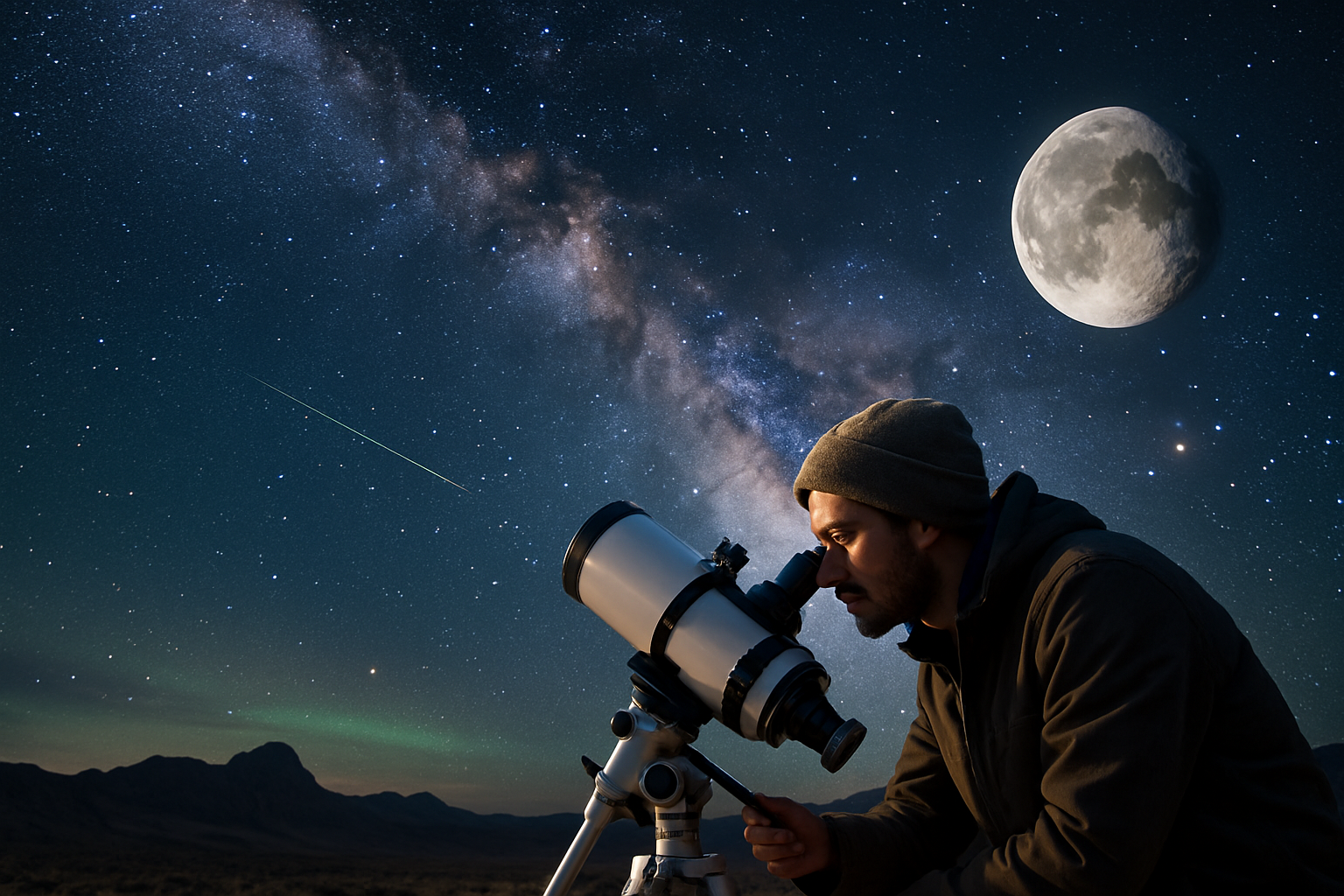Astrotourism: Stargazing Adventures Beyond the Beaten Path
Imagine a vacation where the night sky becomes your ultimate destination. Astrotourism, the emerging trend of traveling to witness celestial spectacles, is captivating adventurers worldwide. This cosmic pursuit combines the thrill of exploration with the awe-inspiring beauty of the universe, offering a unique perspective on our place in the cosmos. As light pollution dims urban skies, intrepid travelers are seeking out remote locales to reconnect with the stars, planets, and galaxies that have fascinated humanity for millennia.

Dark Sky reserves like Jasper National Park in Canada and NamibRand Nature Reserve in Namibia have become hotspots for astrotourism. These protected areas not only preserve natural habitats but also safeguard the darkness essential for observing celestial phenomena. Visitors can participate in guided night sky tours, astrophotography workshops, and even sleep under the stars in specially designed accommodations.
Celestial Events as Travel Catalysts
Astronomical events are increasingly driving travel decisions, with eclipse chasers and meteor shower enthusiasts planning trips around cosmic calendars. The total solar eclipse of 2017 saw millions of Americans journey to the path of totality, while the 2019 total solar eclipse in Chile and Argentina sparked a surge in South American tourism.
Looking ahead, the 2024 total solar eclipse crossing North America is already influencing travel plans. Hotels and campsites along the path are booking up years in advance, highlighting the growing appeal of celestial event tourism. Beyond eclipses, annual meteor showers like the Perseids and Geminids are inspiring stargazers to seek out dark skies during peak viewing periods.
Integrating Astronomy into Cultural Tourism
Astrotourism is not limited to natural phenomena; it also encompasses cultural and historical aspects of astronomy. Ancient observatories and archaeoastronomical sites are gaining popularity among travelers interested in the intersection of culture and cosmos.
Chichen Itza in Mexico, with its precise astronomical alignments, and Stonehenge in England, renowned for its solstice celebrations, are prime examples of destinations where visitors can explore humanity’s enduring fascination with the stars. These sites offer a unique blend of historical insight and celestial wonder, appealing to both history buffs and astronomy enthusiasts.
The Technology Driving Cosmic Experiences
Advancements in telescope technology and astrophotography equipment are enhancing the astrotourism experience. Many observatories now offer public viewing nights with state-of-the-art telescopes, allowing visitors to peer deep into space. Mobile apps like Star Walk and Sky Map have made stargazing more accessible, providing real-time guides to constellations and planets visible from any location.
For serious enthusiasts, specialized astro-lodges are emerging, equipped with high-powered telescopes and expert guides. These facilities, found in prime dark sky locations from the Chilean Atacama Desert to the Australian Outback, offer immersive astronomical experiences tailored to both novices and seasoned stargazers.
Challenges and Considerations for Astrotourists
While astrotourism offers unique experiences, it comes with its own set of challenges. Weather dependency is a significant factor, with cloud cover potentially obscuring celestial views. Travelers must be prepared for the possibility of unfavorable conditions and plan accordingly.
Light pollution remains a persistent issue, even in remote areas. Astrotourists should research their destinations carefully, considering factors like moon phases and local light ordinances that might affect visibility. Additionally, preserving dark sky sites requires responsible tourism practices, including minimizing light usage and respecting local ecosystems.
Stellar Tips for Aspiring Astrotourists
• Plan your trip around lunar cycles, aiming for new moon periods for optimal darkness
• Invest in red-light headlamps to preserve night vision while navigating in the dark
• Consider joining an astronomy club or guided tour for expert insights and access to equipment
• Familiarize yourself with basic constellations and celestial objects before your trip
• Pack warm layers, as temperatures can drop significantly at night, even in warm climates
• Allow time for your eyes to adjust to the darkness – it can take up to 30 minutes for full dark adaptation
As we gaze upward, astrotourism offers a profound reminder of our place in the universe. This growing trend not only provides breathtaking experiences but also fosters a deeper appreciation for the night sky and the importance of preserving it. Whether you’re witnessing the dance of the aurora borealis or the sweep of the Milky Way, astrotourism promises adventures that are truly out of this world.




